Chapter: 11th Food Service Management : Chapter 3 : Selection of Foods and Methods of Cooking
Selection, Purchase and Storage of Foods
Selection,
Purchase and Storage of Foods
1. Food Selection
“Food selection is a choice of selecting a food which is
good for the customer”.
Selection of food is very
important in running a food service. Providing food in a manner which is
satisfactory to cus-tomer is a challenging task.
Careful thought, planning and
appropriate decision is very important in selection of food. Quality food can
be selected when standards like FSSAI are followed.
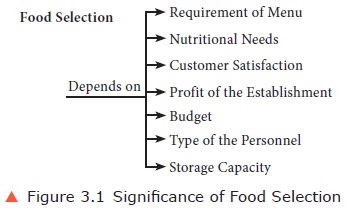
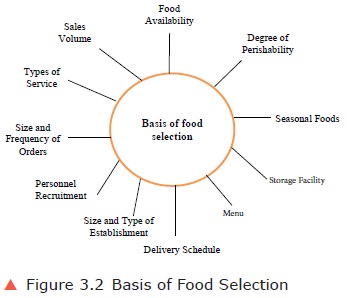
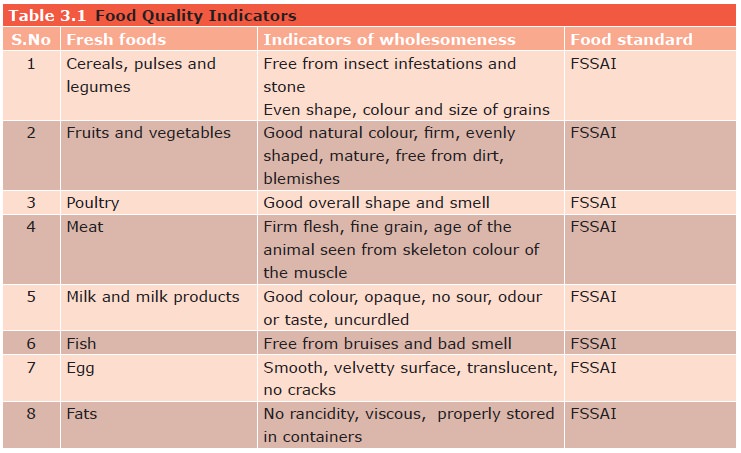
FSSAI
Food Safety and
Standards Authority of India (FSSAI) is an autonomous
body established under the Ministry of Health and Family Welfare, Government of India. It has been estab-lished under the Food Safety and Standards Act, 2006.
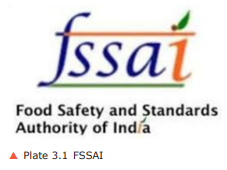
The main objectives of FSSAI are
to
·
Ensure
establishment of standards and practices that fully assure consum-ers interest
and adhere to the highest degree of integrity possible.
·
Create
awareness among consumers in making informed choices regarding the food they
consume.
·
Establish
a framework of food safety with defined responsibility of each food business
operator.
2. Purchasing
“Purchasing is the formal process of buying goods and
services”.
“Purchasing is the process of get-ting the right product
into facility at the right time and place, plus the amount of goods at the
right price and source”.

Every production operation has
different purchasing procedures. But there is one rule that should always be
followed.
Buy only as much as it is needed
until the next delivery.
This will ensure that foods stay fresh and will create a high inventory
turnover.
a. Important Functions of Food Purchasing in a Food Service
·
Help in
menu planning.
·
Aid to
predict profitability of an estab-lishment.
·
Evaluate
the quality of the products.
·
Identify
the suppliers potential.
·
Maintain
customer satisfaction.
·
Know the
latest forms of technology, products or services available in the market place.
b. Methods of Purchasing
Depending on the type of
establishment, the following purchasing methods are used.
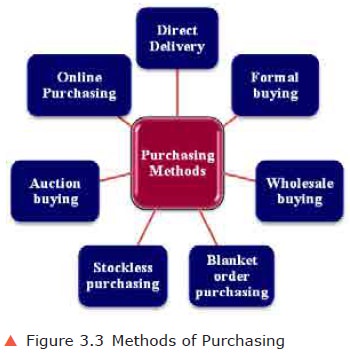
i. Direct Delivery
Involves direct delivery of food
and beverages from the manufacturers to the food service operation.
ii. Formal Buying
Quotations are invited from the sellers, bids are made and the best one
is selected.
Generally adopted by large
catering establishments.
iii. Wholesale Buying
Contract is signed with a wholesaler for purchase of goods at a specific
price for a future period.
Suitable for large scale food
service operation.

iv. Blanket Order Purchasing
An agreement to provide a specified quantity of listed items for a
period of time at an agreed price.
v. Stockless Purchasing
The buyer
does not keep the stocks of goods but the supplier keeps it.
Then the
buyers get the goods accord-ing to the needs.
vi. Auction Buying
Manufacturers
announce the sale of goods.
Suitable for large food service
operation.
vii. Online Purchasing
Ordering food from a local or food cooperative through a web page or
app.
Guidelines for Purchasing Foods
·
Check
‘expiry’ and ‘best before’ dates and purchase food accordingly.
·
Buy only
pasteurized milk and govern-ment inspected meat and poultry.
·
Do not
buy canned goods in tins that are bulged, dented, rusted or cracked.
c. Knowledge Required for a
Food Purchaser
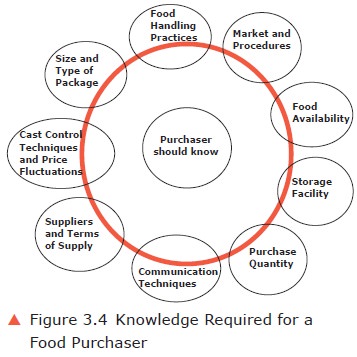
·
Do not
buy food from unrefrigerated displays that should be in a cooler.
·
Do not
purchase eggs that are cracked.
·
Buy
seasonal foods.
·
Bulk
buying is preferable.
3. Storage of Foods
“It is the process in which both cooked and raw materials
are stored in appro-priate conditions for future use without any spoilage”.
Golden rules for storing food.
• Clean
• Cover
• Cool/Dry
Importance of food storage in a food service
• Preserve
wholesomeness of the food.
• Protect
quality of the food ingredients.
• Maintain
expected shelf life of the product.
• Reduce
wastage and spoilage.
• Control temperature.
• Prevent food contamination.
• Ensure safe for consumption.
• Stabilize the price.
• Future use.
• Cope with demand, production on a continuous basis.
In any type of food service operation, three different storages are
essential.
Table 3.3 Types of Food Storage
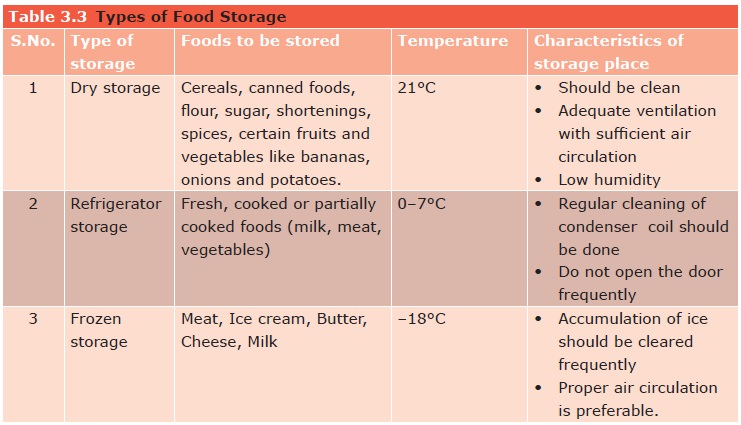
Table 3.4 Ideal Ways of Storage
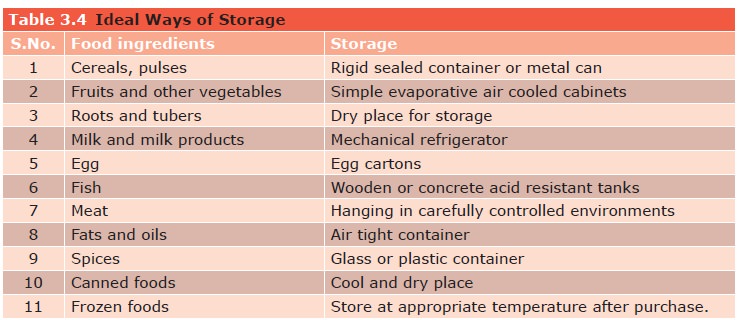
Related Topics